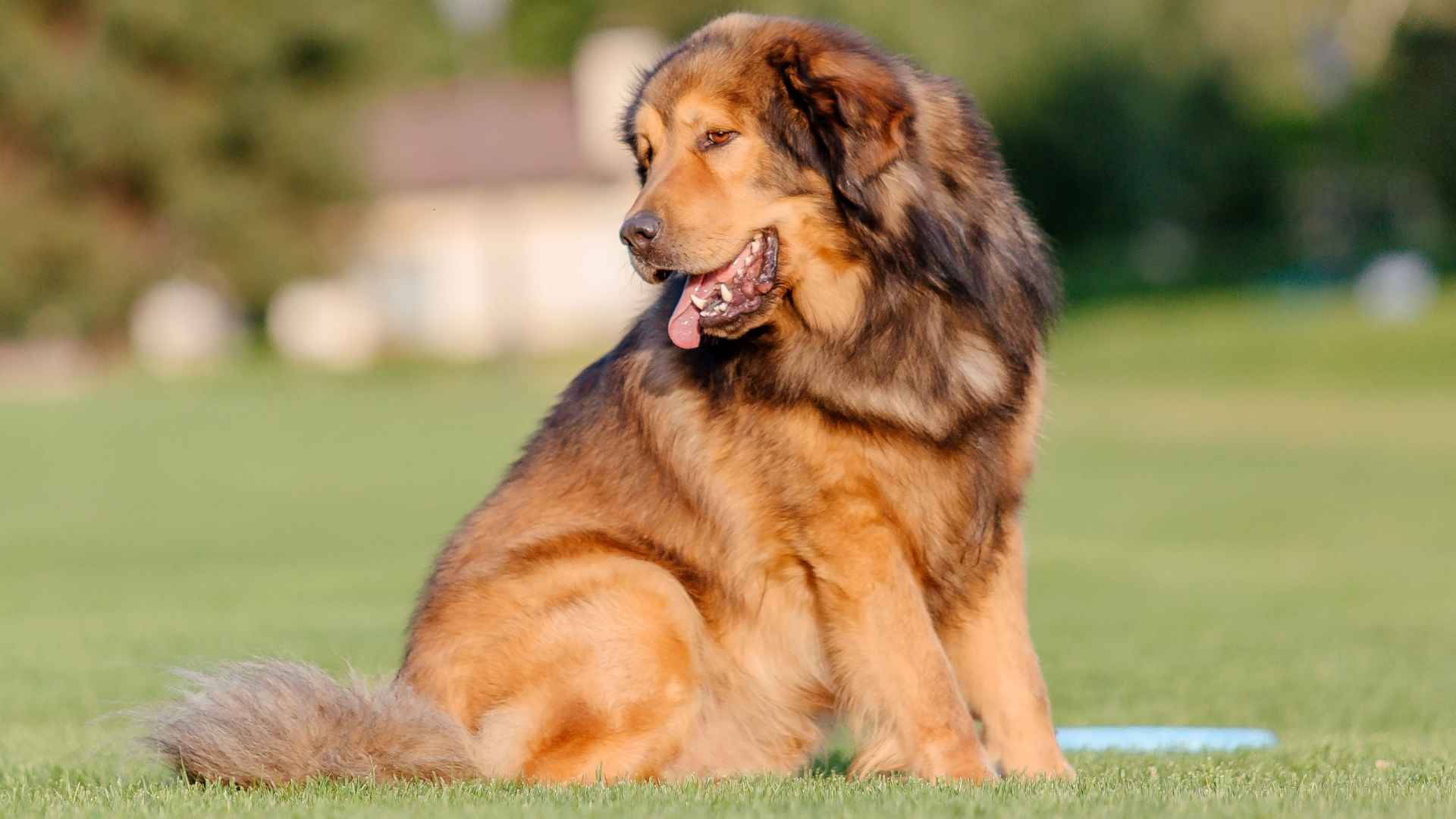There’s something undeniably awe-inspiring about sharing your space with a giant dog. Towering in size and full of heart, huge dog breeds have long served as protectors, workers, and loving companions. Their sheer presence can fill a room, and your life, with joy, loyalty, and the occasional comical clumsiness. But beneath those massive paws and gentle eyes lies a responsibility that’s equally supersized.
While big dogs offer plenty of love, they also come with unique care needs. From larger meals and more spacious sleeping areas to stronger leashes and bigger doses of medication, everything scales up with size. These gentle giants often retain the strong instincts and stamina they were originally bred for, making training, exercise, and space essential components of a happy, healthy life.
If you’re considering adding one of these majestic canines to your family, it’s important to understand what that commitment entails. The rewards are plenty, but so are the demands, and that’s what makes owning a large breed so special.
Huge Dog Breeds
1. Saint Bernard
Among the most iconic of the huge dog breeds, the Saint Bernard is a gentle giant with a storied past. According to the AKC, the Saint Bernard is one of the most well-known large dog breeds and originates from the Swiss Alps.
Today, Saint Bernards are cherished family companions, especially known for their affectionate nature and patience with children. While they’re calm and dependable, their rescue roots may still surface in behaviors like enthusiastic digging when left unattended outdoors.
Appearance
Saint Bernards are massive in both size and presence, typically standing between 26 and 30 inches tall and weighing up to 180 pounds. Their bodies are broad and muscular, topped with a large, expressive head and soft, drooping ears.
The breed’s coat can be either short and dense or medium in length with a slightly rougher texture. Common color combinations include red-brown and white or brindle and white, contributing to their instantly recognizable appearance.
Fun Fact: Saint Bernards were originally trained for avalanche search-and-rescue work, often saving lives in the treacherous conditions of the Alps.
2. Newfoundland
Originally bred in Canada to assist fishermen, this powerful breed was known for hauling nets, pulling carts, and performing heroic water rescues in icy conditions. Modern-day Newfies still retain their love for the water and a calm, sweet temperament.
PetMD reports that Newfoundlands are large, gentle dogs known for winning over their families with their kind and affectionate nature. They’re intelligent, easy to train, and form strong bonds with their people, often showing a special fondness for children.
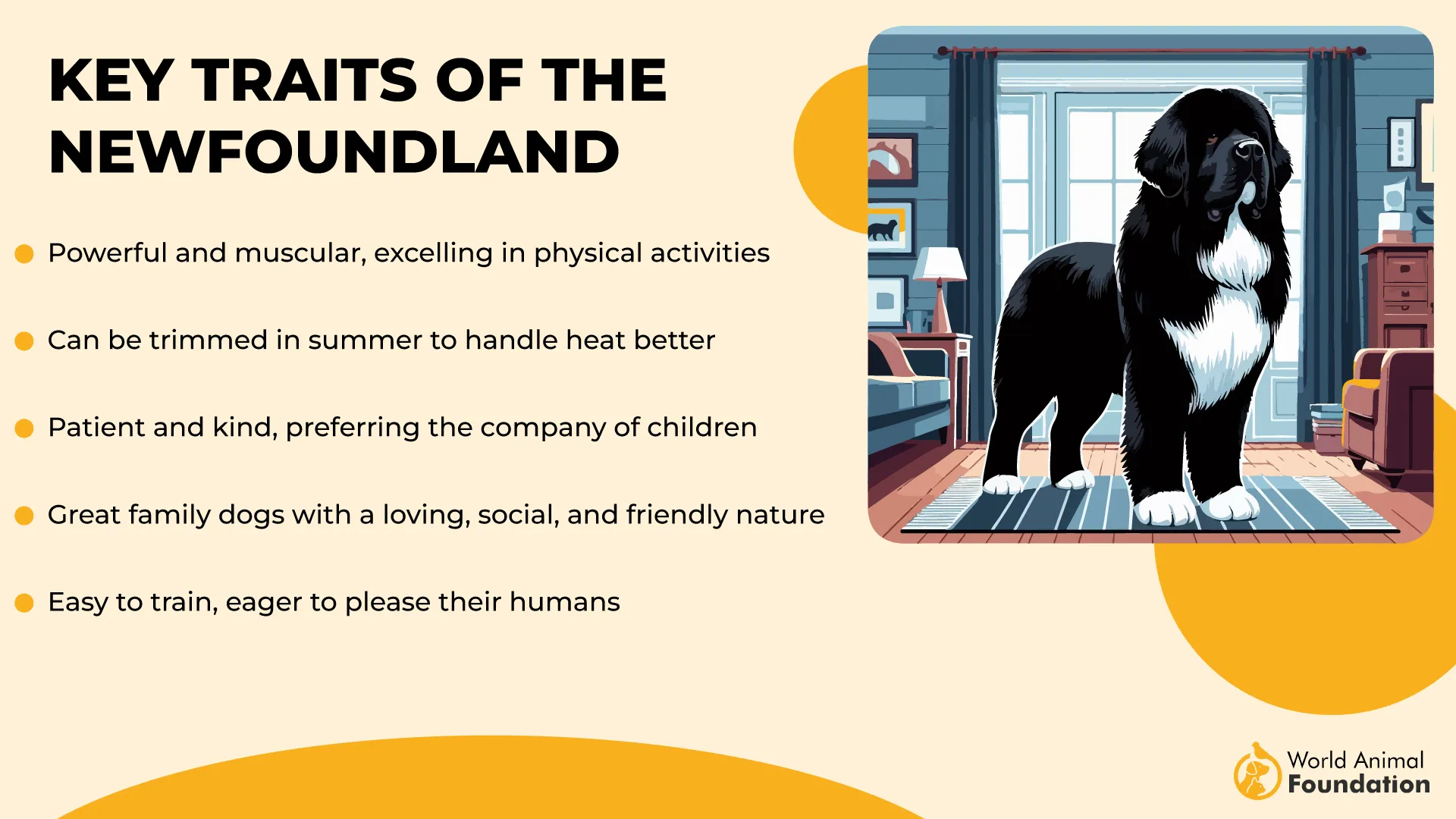
Appearance
Massive yet soft-hearted, these intelligent dogs typically weigh between 100 to 150 pounds. Their most notable features include a broad head, small, close-set ears, and large, webbed feet designed for efficient swimming.
Their double coat includes a water-resistant outer layer that comes in black, brown, or black-and-white combinations, each as majestic as the breed itself. Despite their size, their soft expressions and thick, fluffy appearance add to their unmistakable charm.
Fun Fact: Newfoundlands have webbed feet and a water-repellent coat, traits that make them expert swimmers and ideal for water rescue work.
3. Irish Wolfhound
The Irish Wolfhound is a regal and ancient breed known for its remarkable size and gentle temperament. WebMD states that Irish Wolfhounds are gentle, devoted, and even-tempered companions. Once fierce hunters of wolves and protectors of homesteads in ancient Ireland, these giants have evolved into calm and affectionate companions.
Despite their imposing height, they are incredibly even-tempered and tend to be sensitive, thriving in environments that offer consistent affection and positive reinforcement.
Appearance
These calm dogs are the tallest breed recognized by the American Kennel Club, with males typically standing at least 32 inches tall at the shoulder, and often towering well over 7 feet when on their hind legs. Weighing between 105 and 120 pounds, they carry a lean, muscular frame.
Their double coat features a wiry outer layer and a soft undercoat, with longer hair on the chin and over the eyes. Coat colors vary widely, from grey and black to wheaten, red, silver, and brindle.
Fun Fact: Despite their hunting origins, Irish Wolfhounds are now prized for their calm demeanor and are considered one of the gentlest of the giant breeds.
4. Leonberger
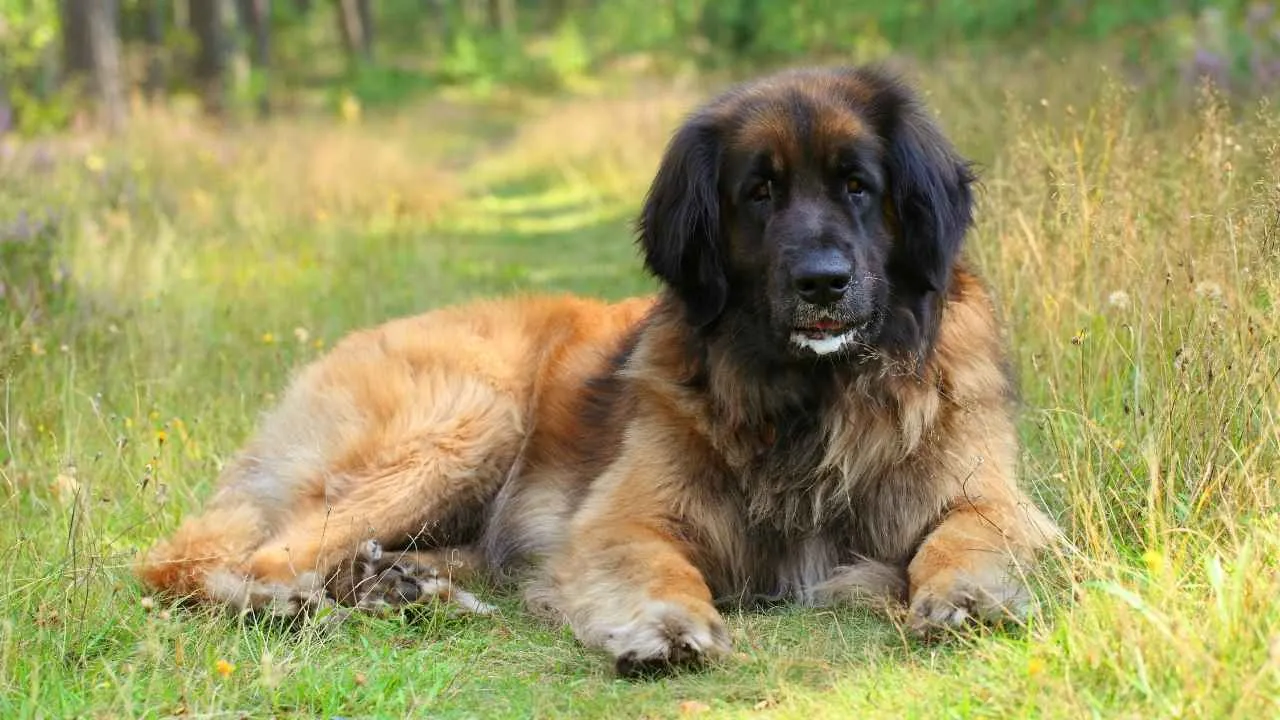
The Leonberger is a true powerhouse among huge dog breeds, blending strength, agility, and an affectionate heart into one majestic frame. Originally bred in Germany as a companion for European nobility, the Leonberger eventually became known for its versatility on farms, excelling in draft work, cart pulling, and guarding.
Despite their working roots, these dogs are deeply loyal and thrive in family environments, often snuggling up with loved ones (even if that means claiming the whole couch). Purina notes that they interact well with children and other animals, showing remarkable patience and an unexpectedly playful nature for a dog of their size. They’re intelligent, eager to please, and need mental stimulation to stay balanced.
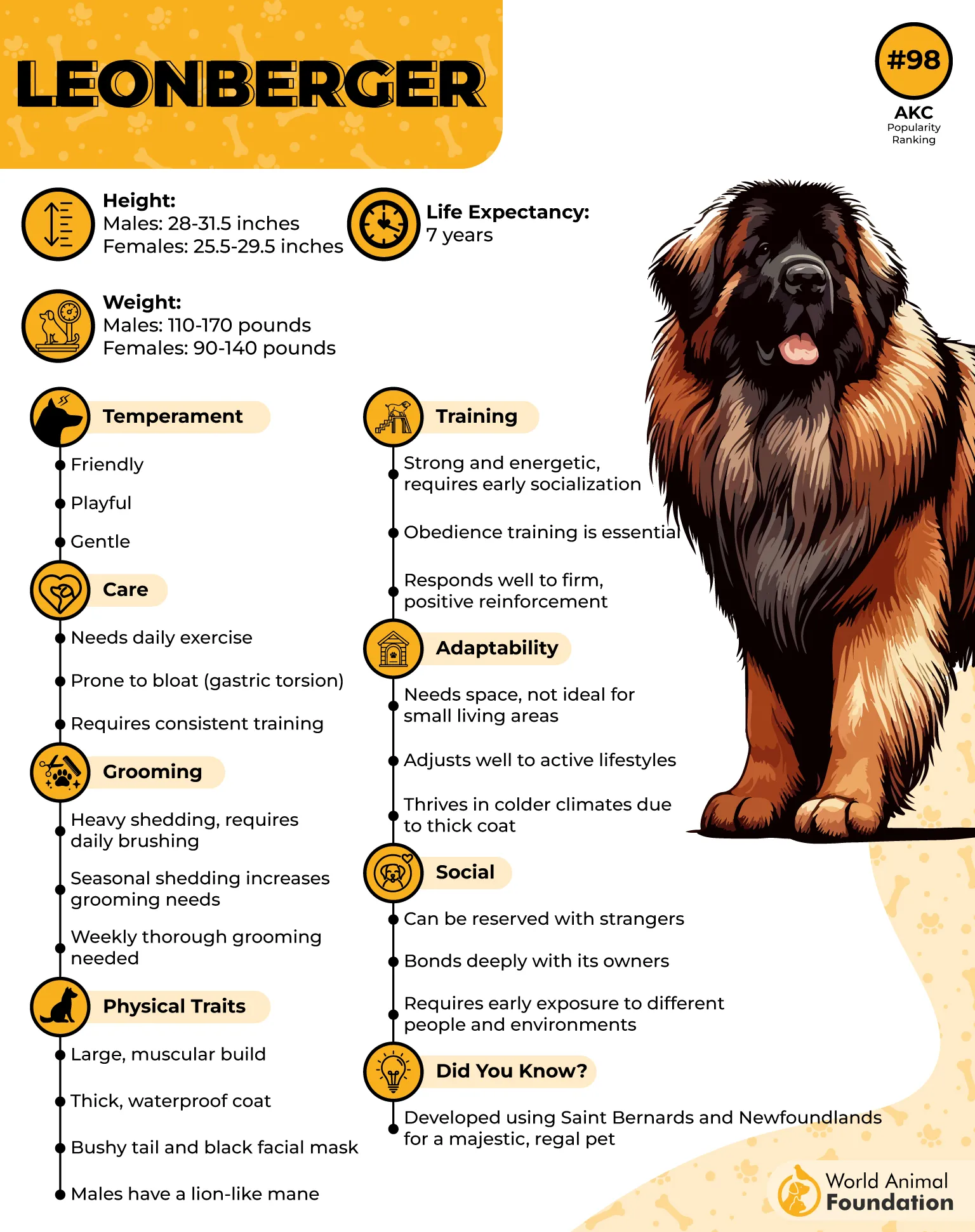
Appearance
Standing 25.5 to 31.5 inches tall and weighing between 90 and 170 pounds, these farm dogs are both imposing and elegant. Males are especially distinctive, often sporting a lion-like mane around the neck.
Their thick double coat can range from lion gold and red to sandy cream shades, all accented by a black facial mask. One unusual trait that sets them apart: their webbed feet, which make them surprisingly strong swimmers.
Fun Fact: The Leonberger was first developed from early crosses between Saint Bernards and Newfoundlands, and was later named after the town of Leonberg in Germany.
5. Neapolitan Mastiff
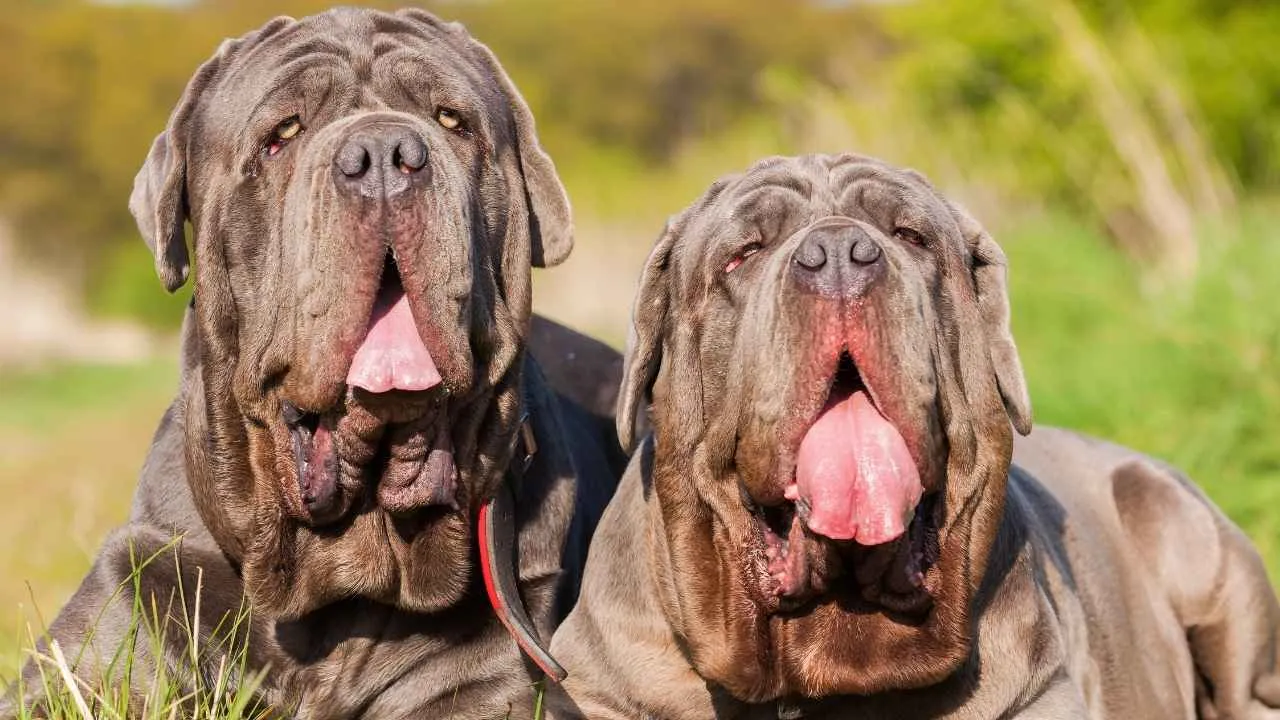
The Neapolitan Mastiff is a colossal, commanding figure, known not just for its size but also for its ancient Roman heritage. Originally bred as a guardian and protector, this loyal and watchful dog is deeply devoted to its family. Despite their formidable presence, Neos are surprisingly laid-back and enjoy lounging as much as they enjoy being alert watchdogs.
While they don’t require high-intensity daily exercise, daily walks are essential to maintain their health and prevent excess weight. According to PDSA, Neapolitan Mastiffs are faithful and affectionate dogs who thrive in a family environment.
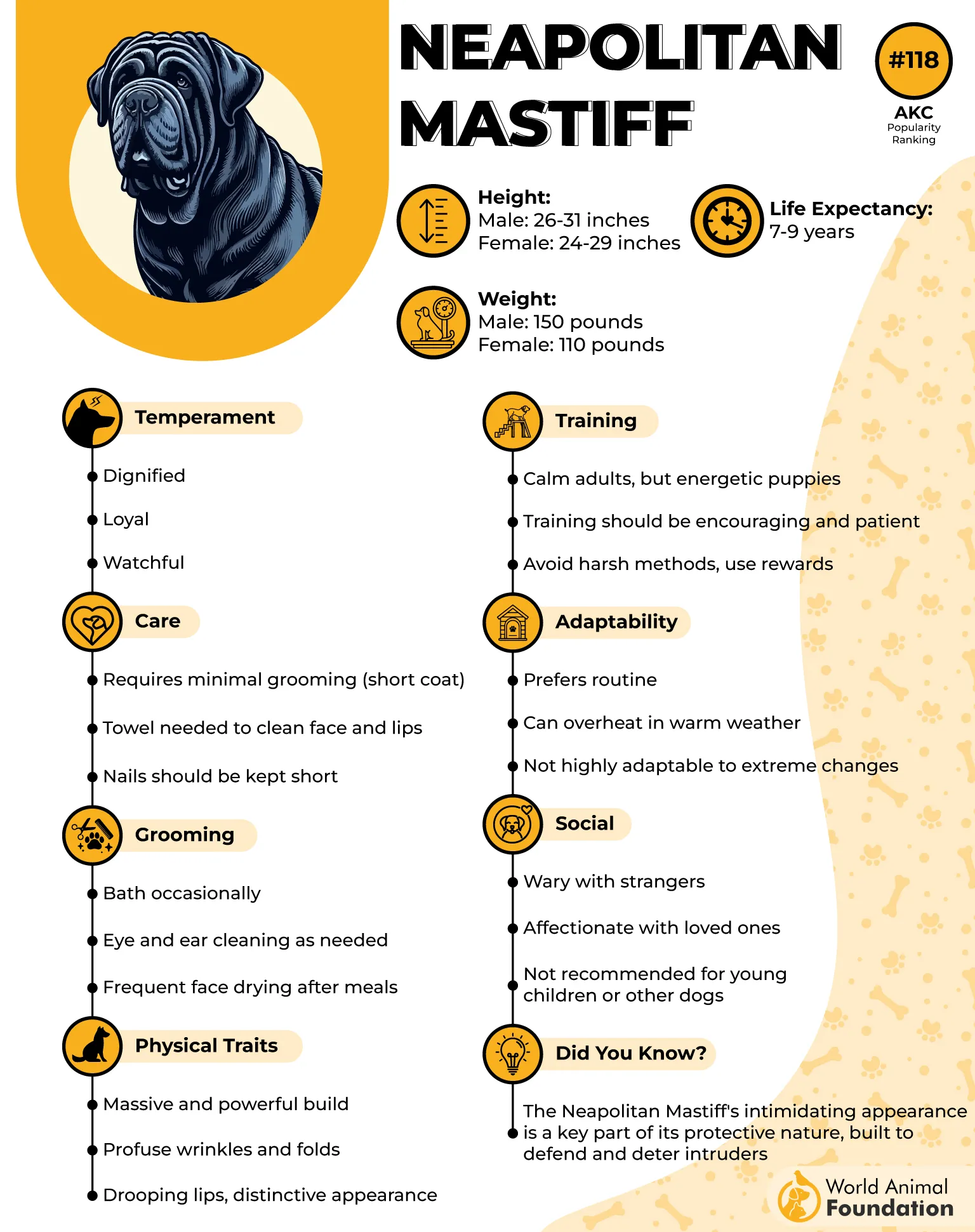
Appearance
Massive and muscular, Neapolitan Mastiffs typically stand between 24 and 31 inches tall and weigh anywhere from 110 to 150 pounds. Their most recognizable features are their heavily wrinkled skin, drooping jowls, and deeply furrowed faces.
Their loose, hanging skin and thick build give them a unique and intimidating silhouette, originally designed to intimidate and shield them during combat. The Neapolitan Mastiff also tends to drool considerably, requiring regular grooming around the mouth and face.
Fun Fact: Although they’re slightly smaller than their English Mastiff relatives, Neapolitan Mastiffs still rank as one of the largest dog breeds in the world.
6. Tibetan Mastiff
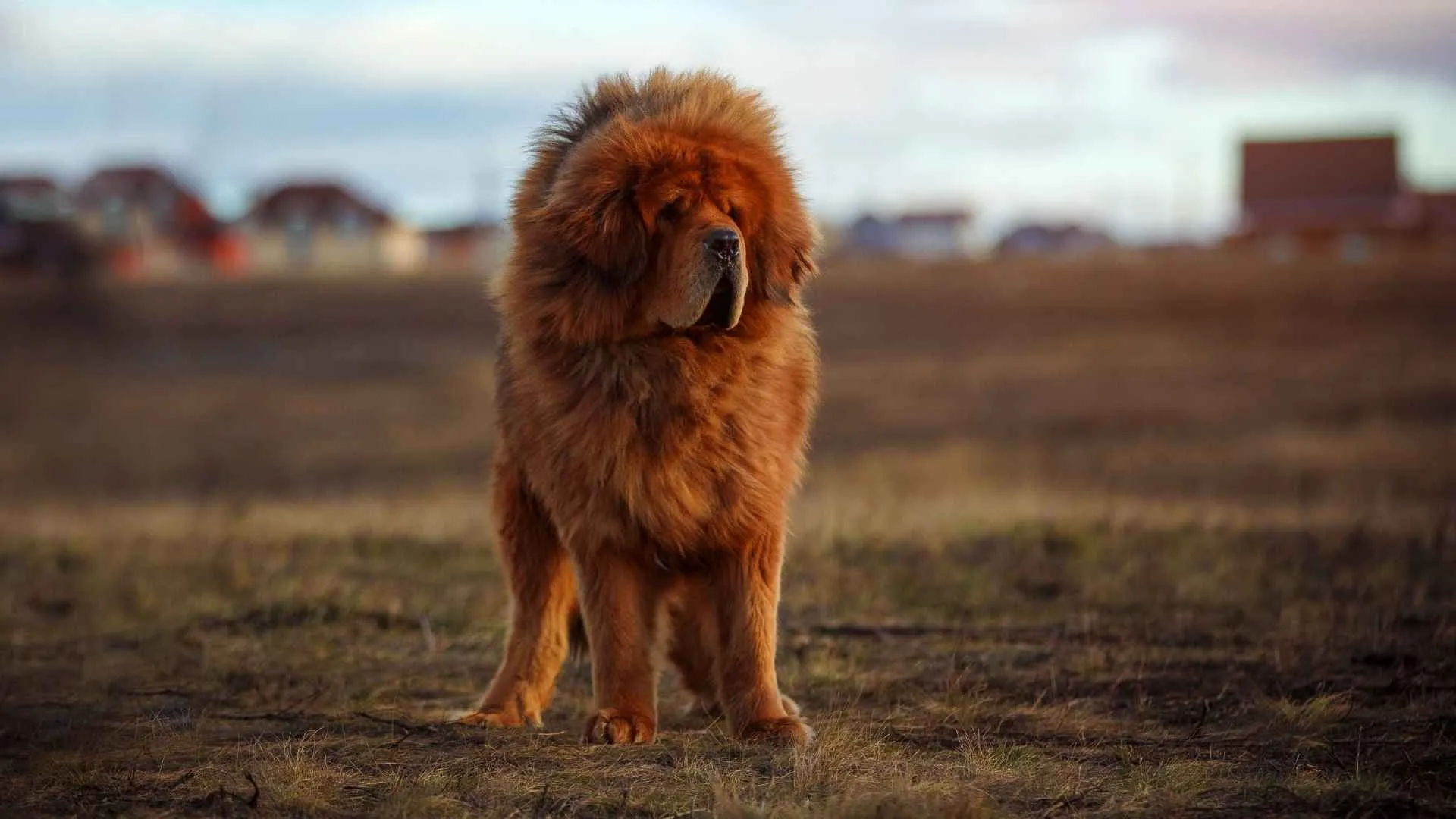
Bred centuries ago to guard monasteries and flocks in the harsh Himalayan terrain, these dogs carry an unwavering loyalty. Known for their watchful and aloof temperament, Tibetan Mastiffs are deeply devoted to their families yet naturally wary of strangers.
Protective and strong-willed, they often assess situations independently, making them best suited for experienced dog owners who respect their intelligence and instinct.
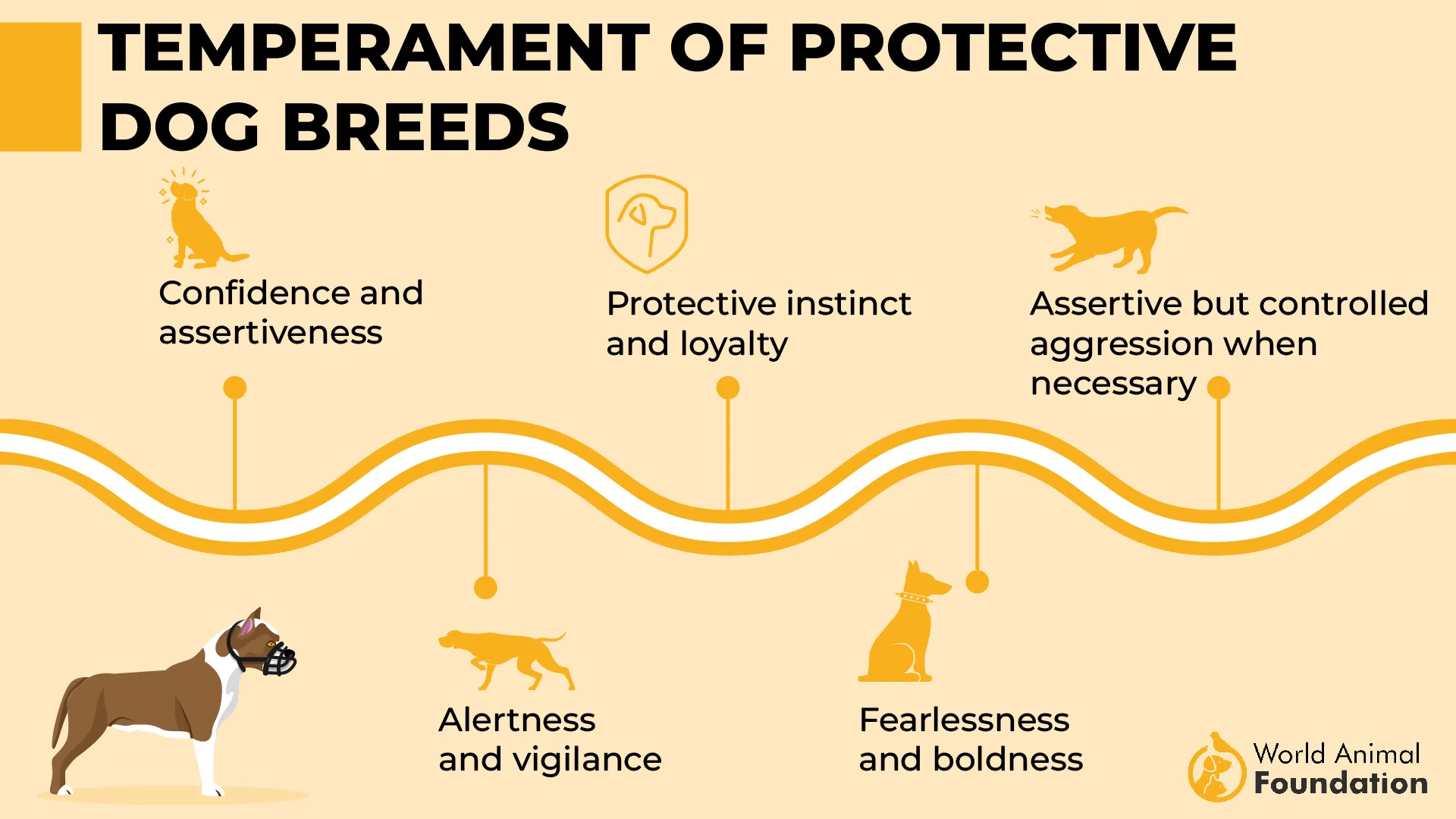
Appearance
Standing between 24 and 29 inches tall and weighing up to 150 pounds, the Tibetan Mastiff is a muscular powerhouse. Their thick double coat, which allows them to thrive in snowy climates, adds to their already impressive stature and requires careful grooming.
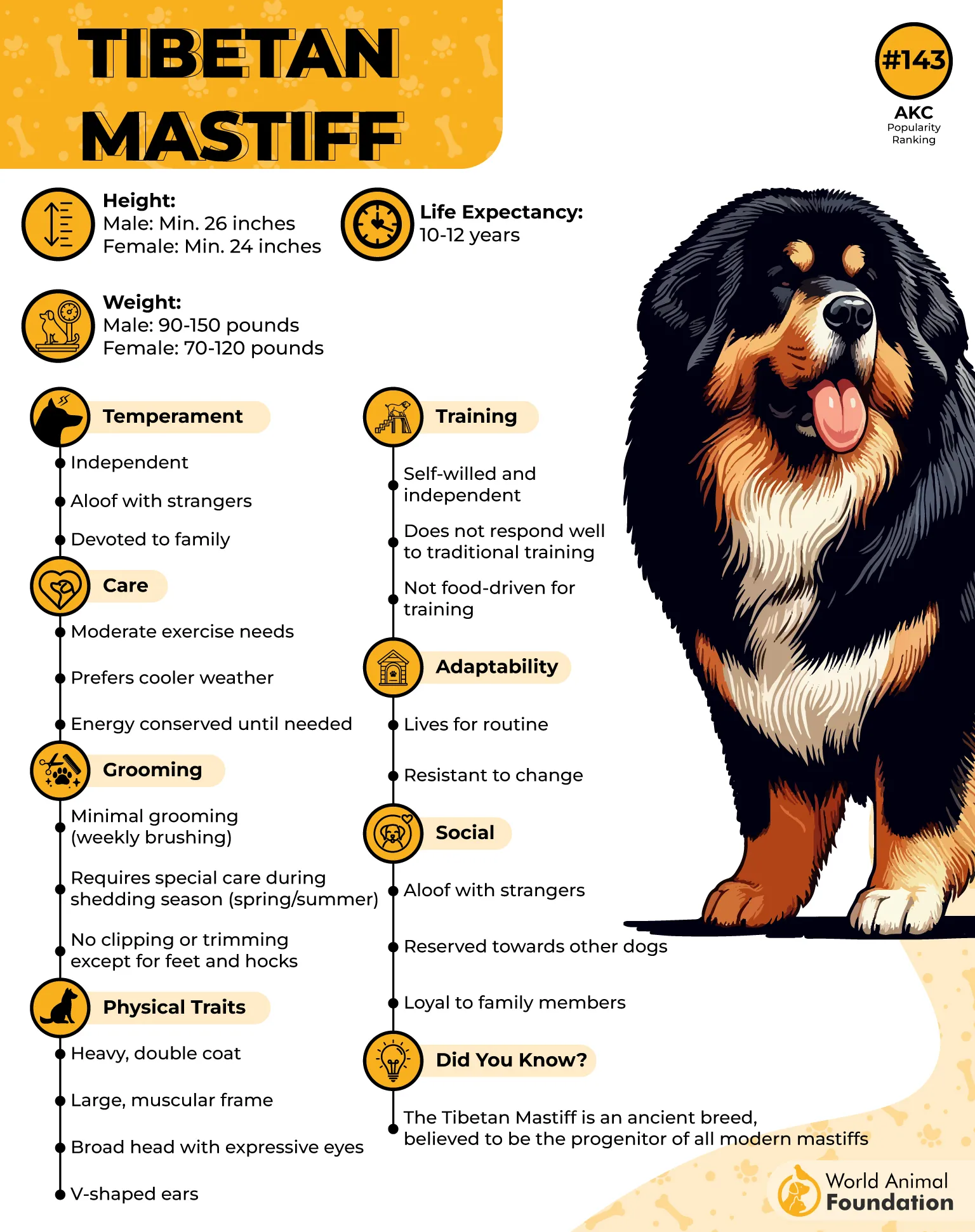
Their broad head, high-set V-shaped ears, and deep-set brown eyes create a wise, dignified expression that mirrors their ancient lineage. The dense fur can give them an almost lion-like appearance.
Fun Fact: Tibetan Mastiffs were once revered guardians of Himalayan monasteries, known for their ability to protect entire communities from predators and intruders alike.
7. Black Russian Terrier
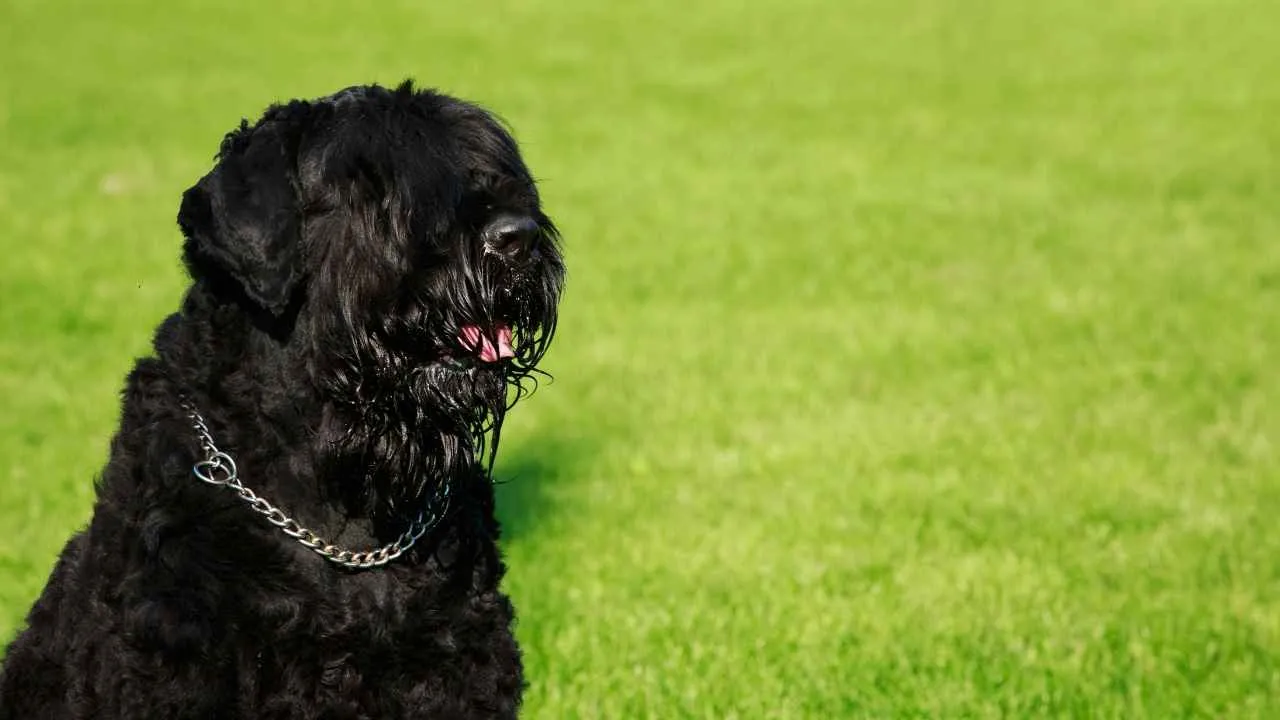
Don’t let the “terrier” name fool you, the Black Russian Terrier is no lapdog. Towering in size and bred for power, this breed was originally developed by the Soviet government in the mid-20th century to serve as a versatile working and guard dog.
Created by crossing breeds like the Rottweiler, Giant Schnauzer, and Newfoundland, the result was a formidable protector with intelligence, endurance, and an unwavering loyalty to its family. While naturally aloof with strangers, these dogs are affectionate with those they trust and gentle with children when properly socialized. They have a life expectancy of 10 to 12 years.
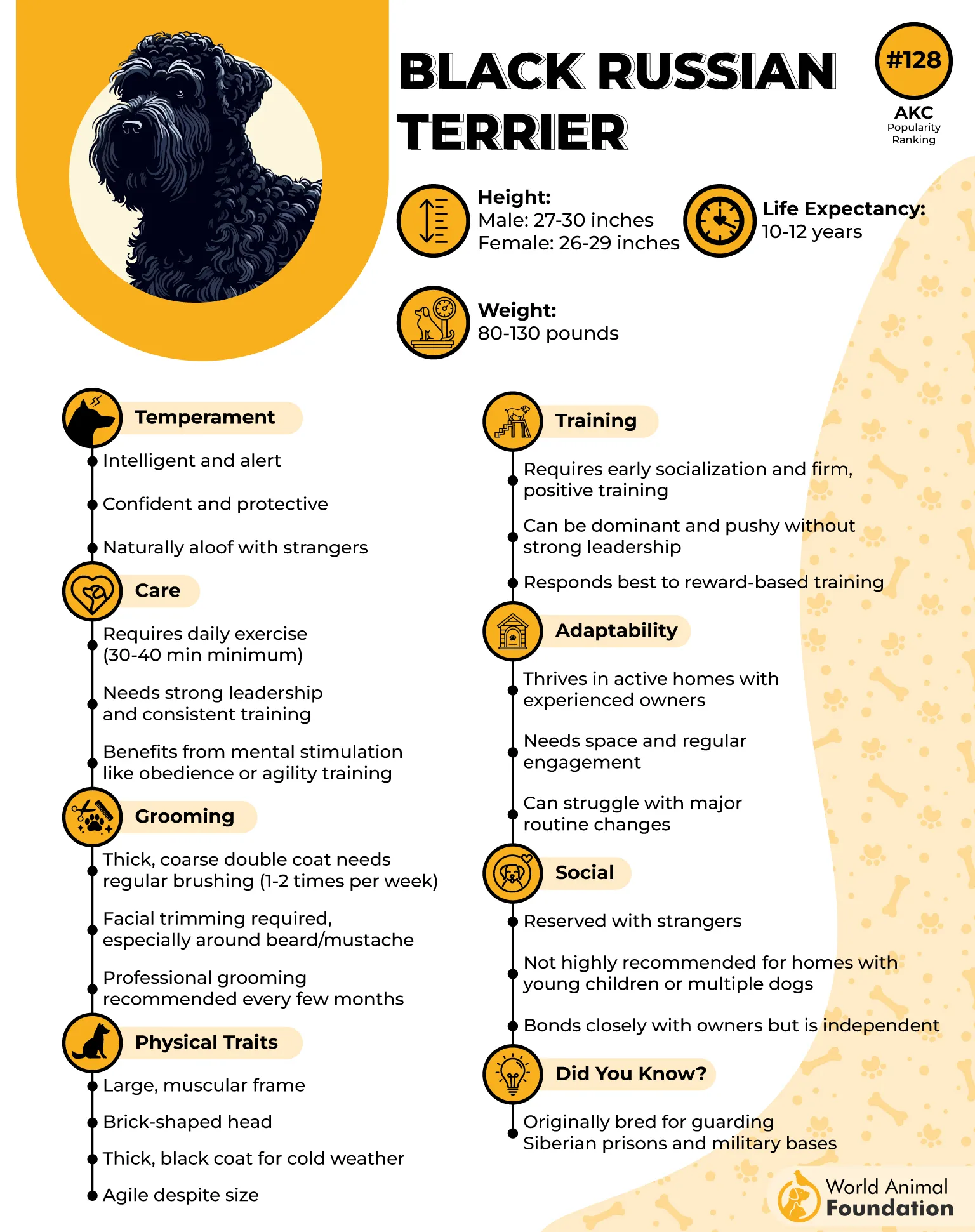
Appearance
The Black Russian Terrier is an imposing presence, typically standing between 26 and 30 inches tall and weighing anywhere from 80 to 130 pounds. It has a square, powerful frame and a dense double coat that consists of a coarse, wiry outer layer and a soft, insulating undercoat.
This low-shedding coat gives the dog a rugged, tousled look and requires regular grooming to stay neat and healthy.
Fun Fact: Despite their name, Black Russian Terriers are not true terriers—they’re classified in the working group due to their strength, intelligence, and guarding abilities.
8. Bullmastiff
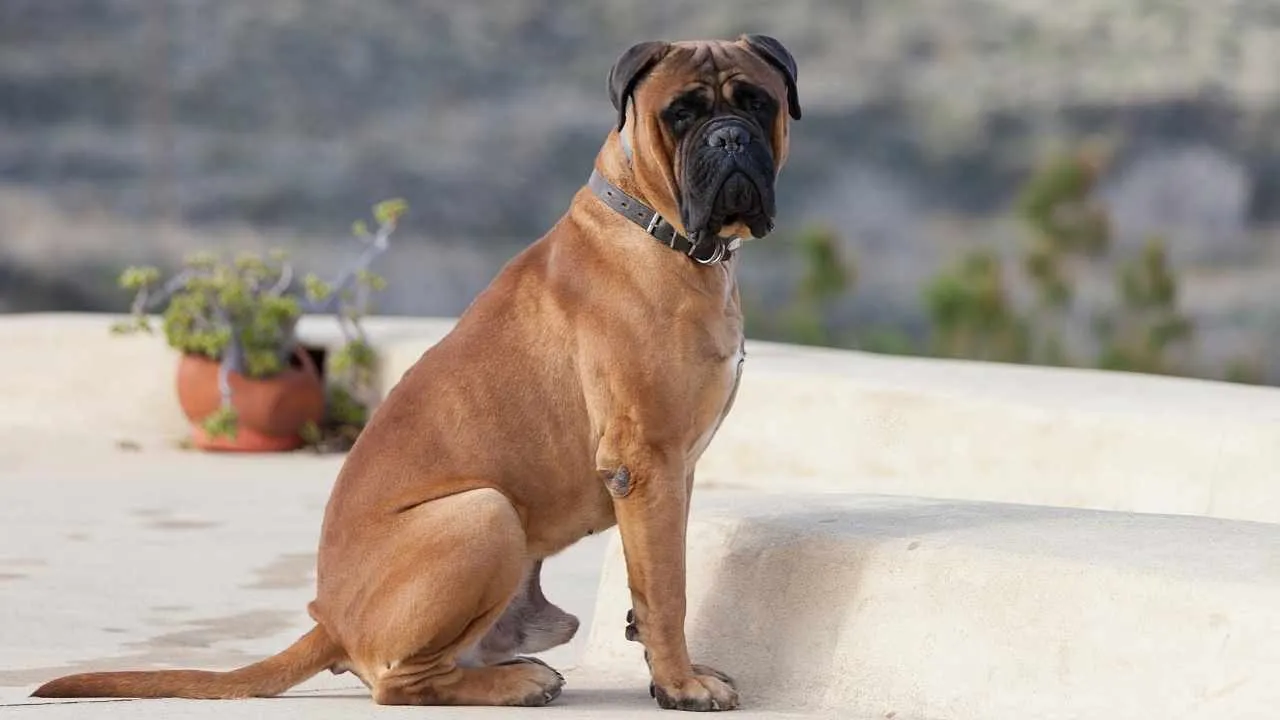
The Bullmastiff combines size, strength, and a steadfast temperament. Developed in 19th-century England by crossing Bulldogs with Mastiffs, this breed was created to guard estates and deter poachers, earning the nickname “the gamekeeper’s night dog.”
Despite their intimidating stature, Bullmastiffs are known for their loyalty and affectionate nature toward family members. Intelligent and quick learners, they benefit from early training and socialization to ensure their protective instincts don’t overwhelm their gentle side.
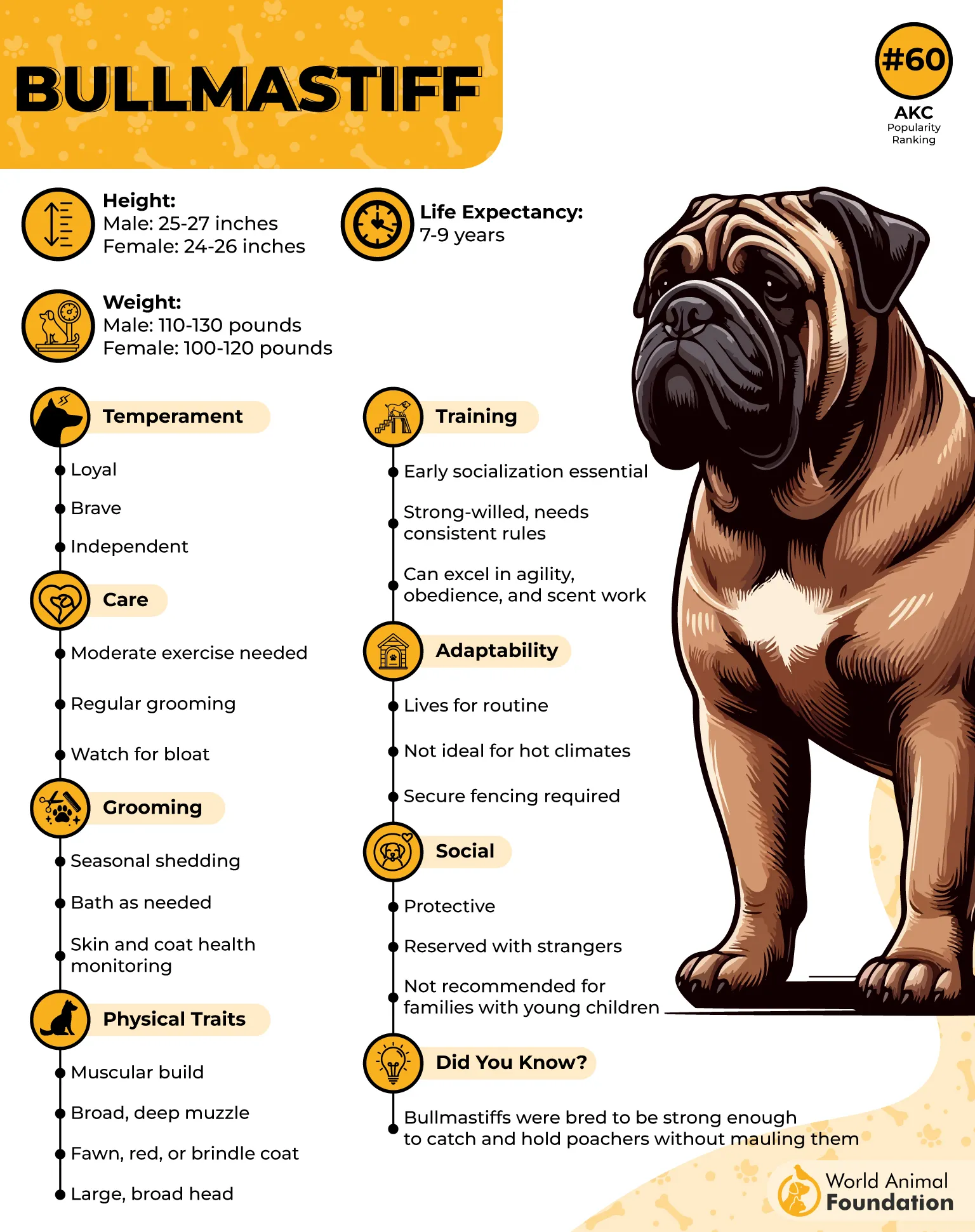
Appearance
Bullmastiffs stand tall at 24 to 27 inches and weigh between 100 and 130 pounds, making them both powerful and imposing. They have a large, broad head, V-shaped ears, and dark, expressive eyes that reflect their intelligence and alertness.
Their short, dense coat comes in fawn, red, or brindle, all of which accentuate their muscular, compact build. Though their frame is solid, their demeanor, when properly trained, is calm and composed.
Fun Fact: These big dog breeds were originally bred to guard English game preserves and were prized for their ability to quietly track and apprehend intruders without causing harm.
9. Anatolian Shepherd
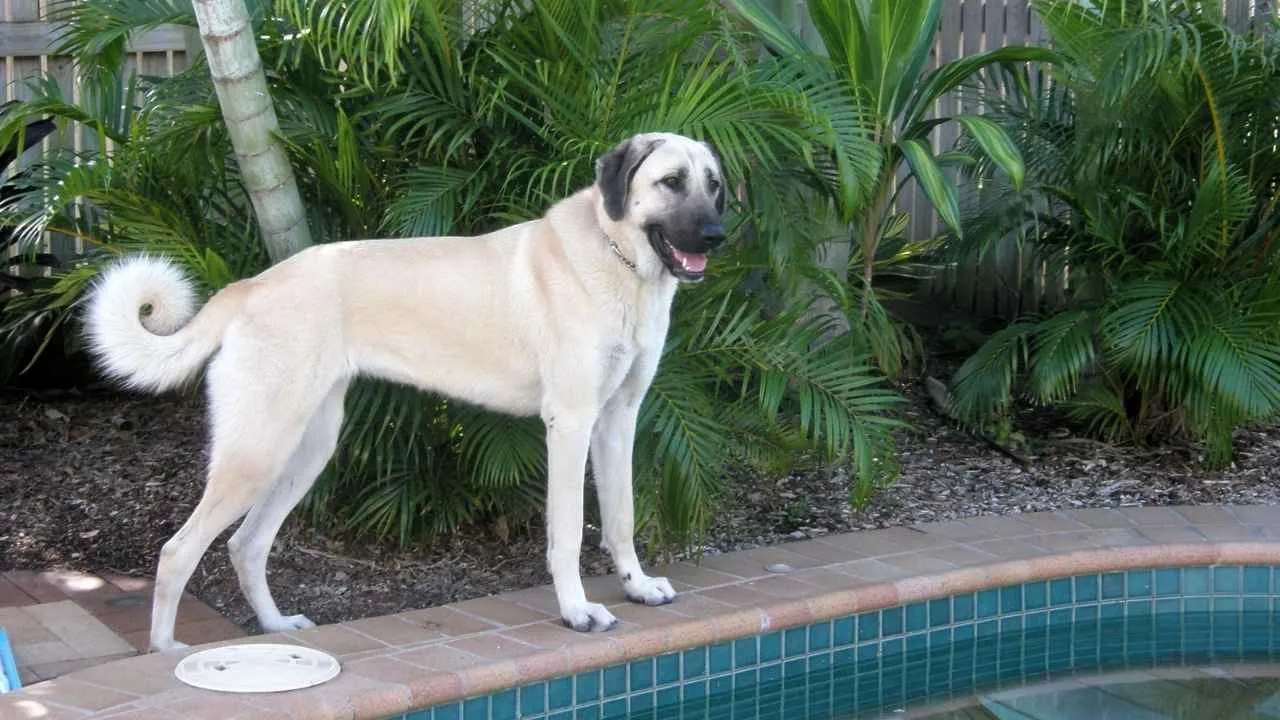
Originating thousands of years ago, this breed was developed in the harsh landscapes of what is now Turkey, where it served as a fearless guardian of livestock. Known for its independence, intelligence, and unwavering loyalty, the Anatolian is a powerful protector with a calm yet alert demeanor.
Naturally territorial, it is highly devoted to its family, whether that means a flock, children, or even the household cat.
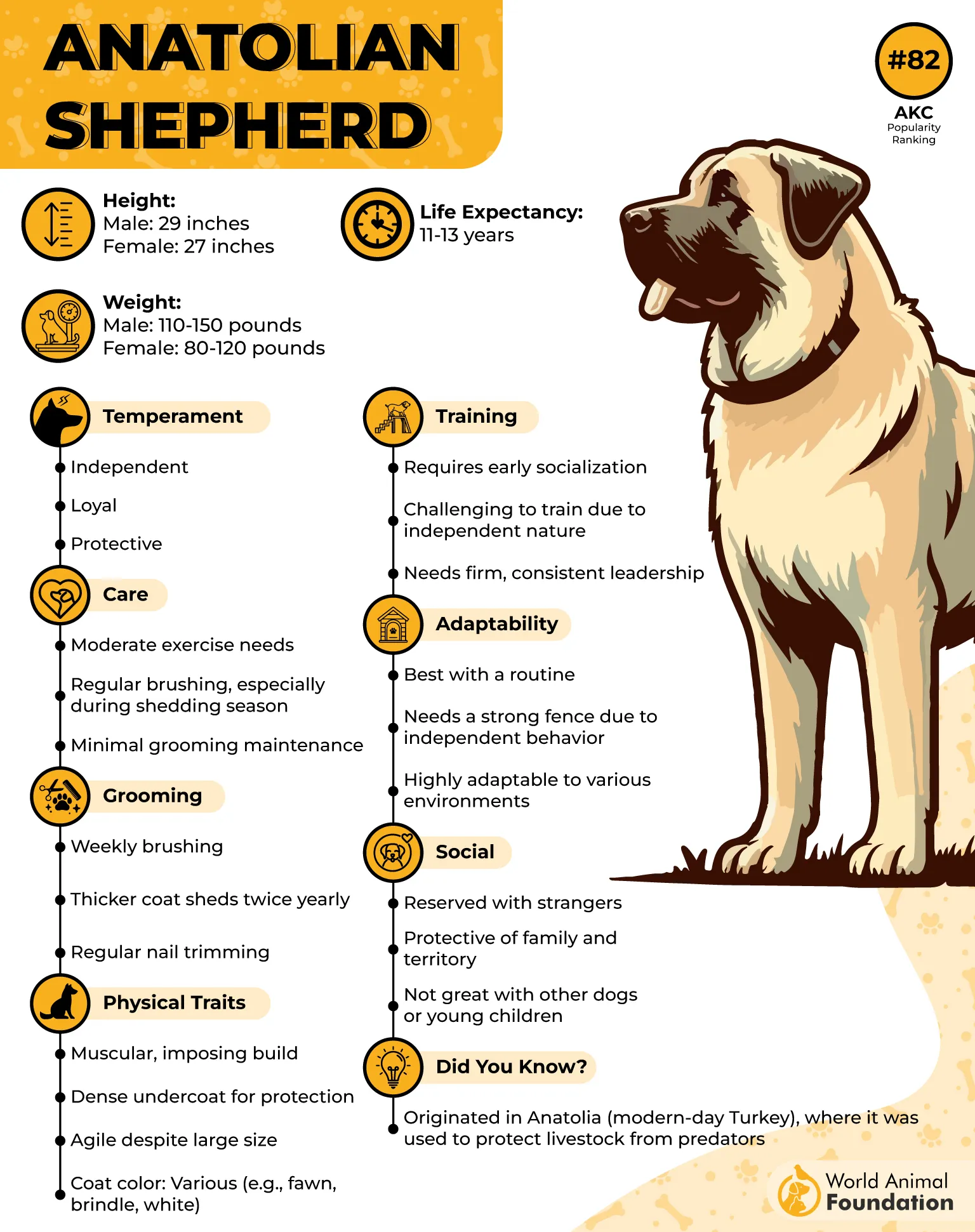
Appearance
The Anatolian Shepherd is tall and powerfully built, standing between 27 and 32 inches and weighing up to 150 pounds. Its physique is rugged and muscular, yet surprisingly agile. It features a broad, heavy head and a short, dense coat designed to withstand both heat and cold.
Coat colors vary, but the breed typically presents a clean, natural look with minimal frills, reinforcing its no-nonsense working dog reputation.
Fun Fact: The Anatolian Shepherd descends from some of the oldest known domestic dog lines, with roots tracing back over 6,000 years to the Bronze Age.
Conclusion
Huge dog breeds bring a unique kind of companionship, one that fills not only your home but also your heart. Whether it’s the calm, watchful Saint Bernard or the protective, powerful Black Russian Terrier, these gentle giants offer unwavering loyalty, intelligence, and love. While their size demands a greater investment in food, grooming, and training, they repay it tenfold with affection and presence. For families who can offer enough exercise, structure, and space, these breeds make wonderful, devoted companions.
When considering a large dog, it’s essential to begin socialization and training at an early age to ensure they grow into well-mannered adults. Many other dogs like the Bernese Mountain Dog, Golden Retriever, and even the elegant Afghan Hound share the charm that make these breeds so beloved. Perfect for families, spacious homes, or country living, these majestic breeds are best suited for owners prepared for their special needs, and the enormous joy they bring.


